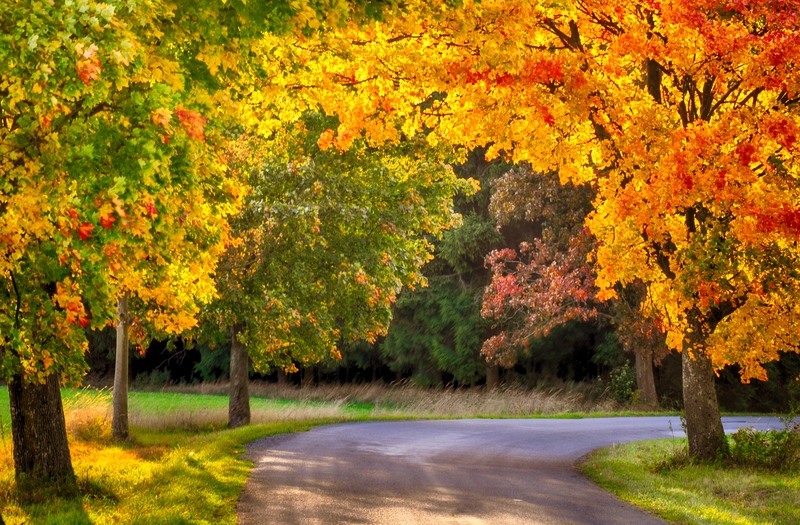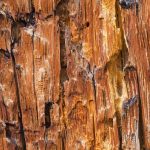Key Takeaways
- Fall inspections are critical timing—leaf drop reveals hidden problems, trees are dormant and less stressed by maintenance, and you can address issues before winter storms hit.
- Warning signs are often subtle but serious—cracked branches, dead wood, fungal growth, new leaning, and pest damage can all lead to sudden tree failure during winter weather.
- You can do basic safety checks yourself—walk around trees, look for obvious dead branches, check for mushrooms at the base, and watch for changes from previous years, but leave climbing to professionals.
- Preventive care pays off financially—emergency tree removal costs 2-3 times more than scheduled maintenance, and insurance may not cover damage from obviously neglected trees.
- Professional assessment covers what you can’t see—certified arborists evaluate species-specific risks, soil conditions, internal decay, and structural integrity that aren’t visible from ground level.
As the leaves start changing and we’re all thinking about winterizing our homes, there’s one important task that often gets overlooked: checking on our trees. While you’re cleaning gutters and scheduling furnace maintenance, your trees might be quietly developing problems that could spell trouble when the first big storm hits.
After years of responding to storm damage calls, I’ve learned that most tree emergencies are completely preventable. Fall is hands-down the best time to catch these issues early.
What Makes Trees Dangerous (Even When They Look Fine)
The thing about trees is that they’re really good at hiding their problems. But fall gives us a window of opportunity—when the leaves drop, we can finally see what’s been hiding up there all summer.
Cracked or splitting branches are probably the most common issue we see, and they’re often the result of what we call “branch failure stress.” Summer storms, drought followed by heavy rain, or even just the weight of leaves and fruit can stress branches beyond their limit. Sometimes these cracks start small—maybe just a hairline split in the bark—but they grow over time. You might not notice them until a moderate wind brings the whole branch down.
Dead branches are easier to spot once the leaves are gone. Here’s a quick test you can do safely from the ground: look for branches that are obviously different from the rest—they might be missing bark, look gray instead of brown, or have no small twigs coming off them. If you can safely reach a smaller branch, dead wood will break with a clean snap instead of bending. These are always the first to come down in a storm.
Fungal growth around the base of a tree is never a good sign. Those mushrooms popping up aren’t just unsightly—they usually mean the tree’s root system or internal structure is compromised. The U.S. Forest Service has found that fungal decay is behind many sudden tree failures, especially in oak trees.
Leaning trees aren’t always dangerous, but if you notice a tree that’s started leaning more recently, or if you can see exposed roots or cracked soil around the base, that’s cause for concern.
Pest damage can be subtle. Look for small holes in the bark or what looks like sawdust around the base. Bark beetles and other borers can hollow out a tree from the inside, and you might not know until it’s too late.
Why Fall Timing Makes All the Difference
There are several reasons why fall inspections just make sense:
First, visibility. With the leaves down, we can actually see the tree’s structure. Problems that were hidden all summer become obvious.
Second, storm preparation. Winter weather is tough on trees—heavy snow, ice storms, and high winds can bring down trees that were already compromised. The Insurance Institute for Business & Home Safety reports that trees cause over $1 billion in property damage annually, and much of that happens during winter storms.
Third, it’s better for the trees. Fall is when trees naturally go dormant, so any pruning or maintenance work is less stressful for them.
And practically speaking, scheduling is easier. Spring is crazy busy for tree companies. Fall appointments are usually easier to get, and you won’t be waiting weeks for service.
What You Can Check Yourself (Safely)
Before calling in the professionals, there are some things you can assess from the ground:
Walk around each tree and look up at the canopy shape. A healthy tree should look relatively balanced. If one side looks much thinner or has significantly fewer branches, that could indicate a problem.
Check the base for mushrooms, soft or spongy bark, or any area where the bark is missing or damaged. Also look for any roots that are exposed or lifting up from the ground.
Look for obvious dead wood from a safe distance. Dead branches often stick out because they lack the small twigs and shoots that living branches have.
Notice any changes from previous years. Trees that are suddenly leaning more, losing bark, or dropping branches outside of normal seasonal patterns need attention.
Remember: if you have to use a ladder or climb to inspect something, leave it to the professionals. Most serious problems can be spotted from ground level anyway.
What a Professional Assessment Covers
When we do a tree risk assessment, we’re looking at the whole picture:
At ground level, we check soil conditions, root health, and look for signs of fungal problems.
Moving up the tree, we examine the trunk for cracks, cavities, or bark problems, then assess the canopy for dead wood, weak branches, and areas where wind might catch.
Species-specific concerns matter too. Bradford Pears are notorious for splitting. Silver Maples often develop weak limbs. Pine trees can be vulnerable to windthrow. Knowing what to look for based on the type of tree makes a big difference.
Services That Actually Make a Difference
Canopy thinning is one of the most effective preventive measures. By removing some interior branches, we reduce wind resistance—trees are less likely to catch wind like a sail and topple over.
Deadwood removal is pretty straightforward—we take out branches that are already dead before they fall on their own.
Sometimes tree removal is the only safe option. It’s not a decision we take lightly, but if a tree is severely compromised, removing it before winter is much safer (and less expensive) than dealing with emergency removal after it falls.
The Real Cost of Putting This Off
I’ve seen too many homeowners learn this the hard way. Emergency tree removal can cost two to three times what preventive work would have cost. Insurance companies are getting pickier about covering damage from trees that showed obvious warning signs. And if your tree damages a neighbor’s property, you could be liable.
A fall inspection and some preventive trimming now could save you thousands of dollars and a lot of headaches.
Why Act This Fall?
Peace of mind is worth a lot. Knowing your trees have been professionally assessed means you can sleep better when the wind picks up.
Your property is protected from preventable damage. Your trees will be healthier and look better. And honestly, well-maintained trees just make your whole property look better, especially heading into the holiday season.
Don’t Wait for the Storm
The best time to deal with tree problems is before they become emergencies. Schedule a fall tree assessment with VMG Tree Care and get ahead of winter weather.
Whether you need preventive pruning, canopy work, or emergency planning—we’re here to help.
Visit vmgtreecare.com or call for a free estimate. Don’t wait until the first big storm to find out which trees might be problems.



